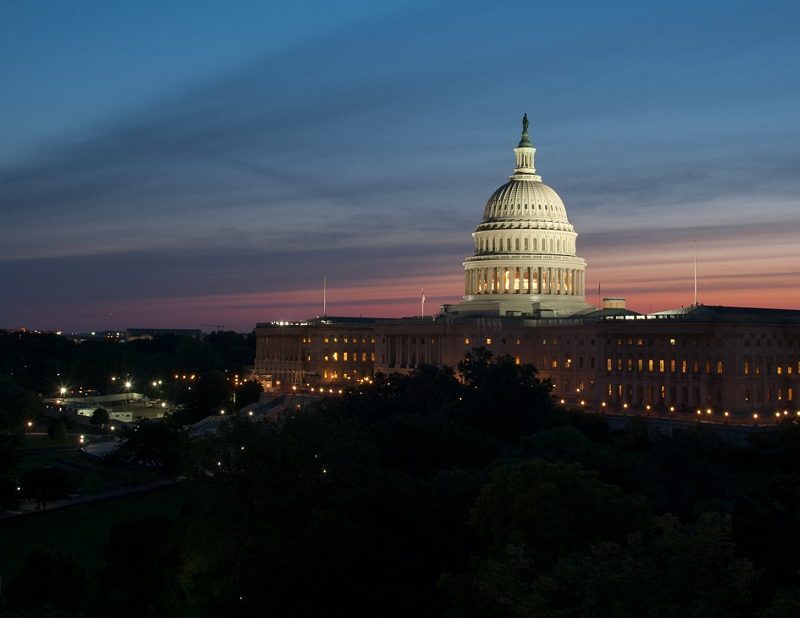The Year Ahead in Energy Policy: What to Watch
Experts advise getting out in front of expanded benchmarking, regulatory changes and other likely trends on the horizon.
By Jeffrey Steele

Detail from photograph of the U.S. Capitol at dawn. Courtesy of the Architect of the Capitol.
What’s ahead for energy policy in the new year? Look for the expansion of benchmarking, the passage of progressively more stringent building codes and response to growing moves from regulated utilities to the wholesale market. As one observer said, the lesson is: “Get ahead of the curve and it will pay dividends in . . . regulatory future-proofing.”
Policy makers are grappling with growing penetration of renewable energy, and what that means for storage, smart grids and two-way communication between utilities and their customers to help manage loads, reported Aaron Binkley, senior director of sustainability for Digital Realty, in San Francisco, Calif. he said. “We also see a general challenge and opportunity from the policy makers and regulators down to the customers as to low-cost natural gas and the retirement of coal plants as more become unprofitable, leading back to the interplay with renewable energy,” he added. Moreover, building codes are becoming more stringent every time they’re updated.”
Large power users among Digital Realty’s customer base are going deep in their understanding of their energy sources. Some large technology companies, like Microsoft in Washington and data center designer-operator Switch in Nevada, are opting to leave regulated utilities and enter the wholesale market. Policy makers are contending with the significance of the trend, Binkley noted.
Meantime, more state and local governments are embracing benchmarking. Digital Realty operates nearly 50 properties in jurisdictions subject to the practice, and that represents about a third of its U.S. portfolio. “We’re being asked to provide more transparency around consumption and use of resources in our building,” Binkley said. “The long-term trend will be greater demand for that transparency.”
Thus far, commercial properties in general have required incentives to embrace solar power, noted Scott Cramer, president of Go Solar Group in Salt Lake City, Utah. Many companies, among them IKEA, Apple and Facebook, have taken advantage of those incentives. “In my opinion, as more companies see the ancillary benefits for the planet of going solar, the potential federal and government incentives will decrease,” he predicted. In 2020, the Federal incentive for any investment in renewable energy will drop from 30 to 26 percent of the total cost in dollar-for-dollar tax reduction, he added.
Code words
On the opposite side of the country, New York City is following in the footsteps of Seattle, Massachusetts and California in adopting tougher energy codes. As a member of the New York City Department of Building energy code advisory committee, John Mealy, project manager and registered architect with New York City-based MBB Architects, is among those reviewing the draft language for the 2019 energy code.
The city is on track to adopt the New York State Stretch Code in 2019; the document’s provisions are 20 percent more stringent than the base code. The mandate will primarily affect new buildings, Mealy said. But in the future, higher insulation values will be required for solid walls, tighter requirements will govern mechanical equipment, and more energy-efficient windows will be required on new buildings, or on existing buildings if altered. “And something that’s relatively new is the introduction of air barrier testing, which assures energy loss through drafts and leaks in the building are reduced,” Mealy added.
From his vantage point as chief executive officer of Sustainable Development Capital LLP in London, Jonathan Maxwell reports that the northeast U.S. the U.K. and a large portion of Europe is confronted with a perfect storm of constrained supply, high prices, reliability problems and pressure to reduce carbon emissions. “So expect to see policies encouraging energy efficiency, on site generation and lower carbon solutions,” Maxwell reported.
“These policies will take the form of sticks in the form of taxes and levies and carrots in the form of tax reliefs and market incentives. Get ahead of the curve, and it will pay dividends in terms of energy cost savings and regulatory future-proofing.”







You must be logged in to post a comment.